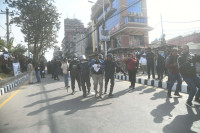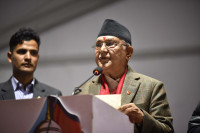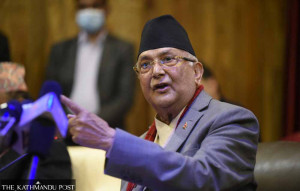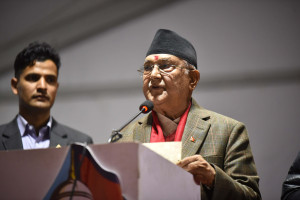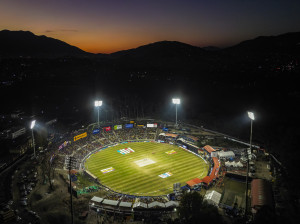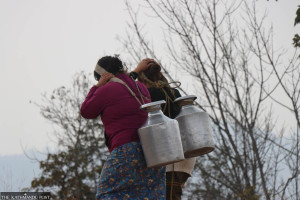Editorial
Respect squatters’ rights
Squatters live where they do only out of necessity; they have nowhere else to go.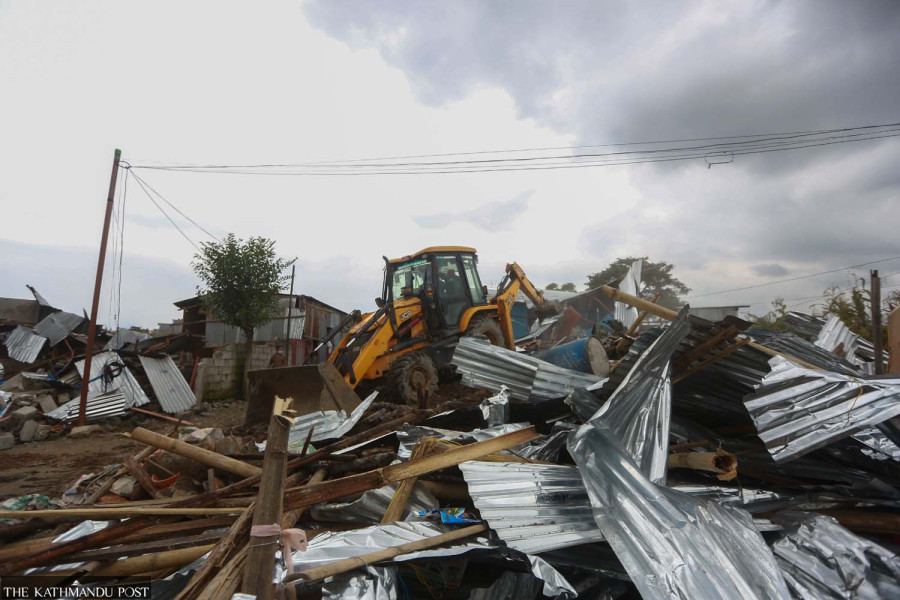
After yet another decision of the Kathmandu Metropolitan City (KMC) to demolish makeshift homes of squatters along the Manohara River in Kathmandu, squatter settlements in the federal capital have again come under the spotlight. Reportedly, the squatters have built 25-30 shanties by encroaching on the Manohara Land Pooling Project’s land. Three months ago, the KMC office released a notice, asking them to vacate the place, yet the squatters didn’t comply. Following this, on Friday, the KMC’s Municipal Police, together with Nepal Police personnel, arrived at the site with an excavator to clear the area. Seeing their structures being torn down, residents started lobbying stones and bricks at the police officers in protest as the police charged at the crowd with batons, resulting in a tense situation.
The question is: Where will the squatters go when their makeshift homes are demolished? Sadly, neither the federal government nor the KMC has an answer. Even though the issue of squatters has long been a headache for Kathmandu Valley, a practical resolution is nowhere close to being found. Past efforts to help squatters resettle elsewhere have not led to desirable outcomes. For instance, in 2012, the Baburam Bhattarai-led government dismantled 251 squatter makeshift homes in Thapathali and decided to relocate them to a relocation centre at Ichangu Narayan in Nagarjun hills, on the western edge of the Kathmandu Valley. But citing a lack of even basic amenities like electricity and running water, no one moved in.
Successive governments as well as local authorities have thus failed to solve the problem of squatters. While beautification of areas along Kathmandu’s rivers is welcome, such a development should not come at the cost of people’s right to live with dignity. Alarmingly, efforts to evict landless squatters have continued even after the Land Related Problems Resolution Commission in February urged all tiers of government not to breach the constitutional rights of squatters, warning that uprooting people from their settlements without proper management goes against human rights and humanitarian laws.
This growing problem warrants decisive policies. The problem of slums is not limited to Nepal; for instance, Indonesia, the fourth most populous country in the world, is also grappling with it. Nonetheless, the country’s mass intervention programme called the National Slum Upgrading Project has helped immensely with squatter management. Such successful models are worth emulating. We also need a systematic approach on squatter eviction, involving joint action from the federal government and the KMC. This should entail gathering accurate information on landless squatters and trying to devise the right relocation plans with direct involvement of the squatters. Use of force, on the other hand, has not worked in the past and is unlikely to work in the future.
Again, as outlined by the United Nations, before proceeding with any evictions, all viable alternatives must be explored, while also considering the participation of affected squatters when making decisions for them. Squatters live where they do only out of necessity; they have nowhere else to go. They know that their settlements are at high risk of being inundated and swept away, and their lives are in constant danger. If they get a good option to resettle elsewhere, many of them will happily do so.




 18.12°C Kathmandu
18.12°C Kathmandu